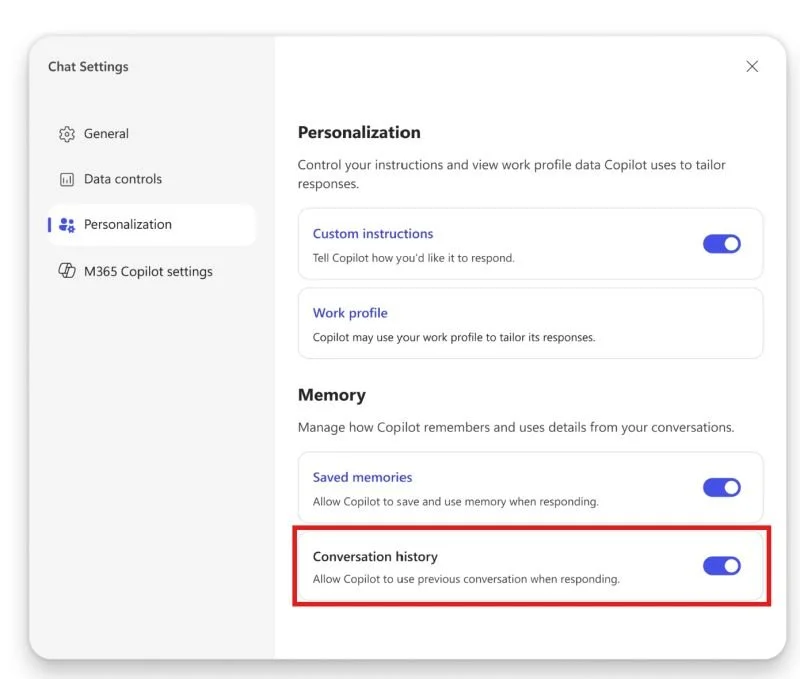Microsoft 365 Copilot Memory Gets Smarter - and More Complicated
The memory feature in Microsoft 365 Copilot Chat is changing.
Whereas up until now, Copilot's memory has been limited to those things it has purposefully added to (or, in human terms, committed to) memory, with this upcoming change, your conversation history will act as a memory resource for its responses.
This update is coming to targeted release in early October, with General Availability coming between mid- and late-October. As is currently the case, admins can opt to turn off the memory feature. The update will see a changed settings UI as shown in the image from message center.
This addition to memory essentially seems to layer in ChatGPT's new approach to this issue while, based on the screenshot shared, maintaining the existing memory and personalization options.
In my experience of using ChatGPT with memory enabled, chat history-based memory works great until it doesn't. There have been several times where ChatGPT has made slightly wacky leaps of logic by applying the content of a chat as a memory when it made no sense or demonstrated an overemphasis of something that was an outlying issue. However, ChatGPT is very different to Copilot, because of Copilot's extensive existing grounding on work data.
I'm sure I am not alone in eagerly waiting for more technical information from Microsoft on how memory works in the broader information flow of Copilot. For example, is memory solely used for pre-processing prompt enhancement, or is it used as an answer on par with an email or Teams chat? How much chat history is consumed and how is it searched? How do we avoid Copilot becoming an individualized echo chamber rather than an organizational source of truth?
From my perspective, the role of memory - which can equally be described as persistent context - is one of the most important barriers still to be overcome to give AI chatbots the tools to deliver on their initial promise. For most of what we do, intelligence is irrelevant without understanding, and the way humans remember and understand remains so vastly different to these tools that it's a bridge that must still be crossed for seamless side-by-side work.
First posted on Linkedin on 10/01/2025 -> View Linkedin post here

